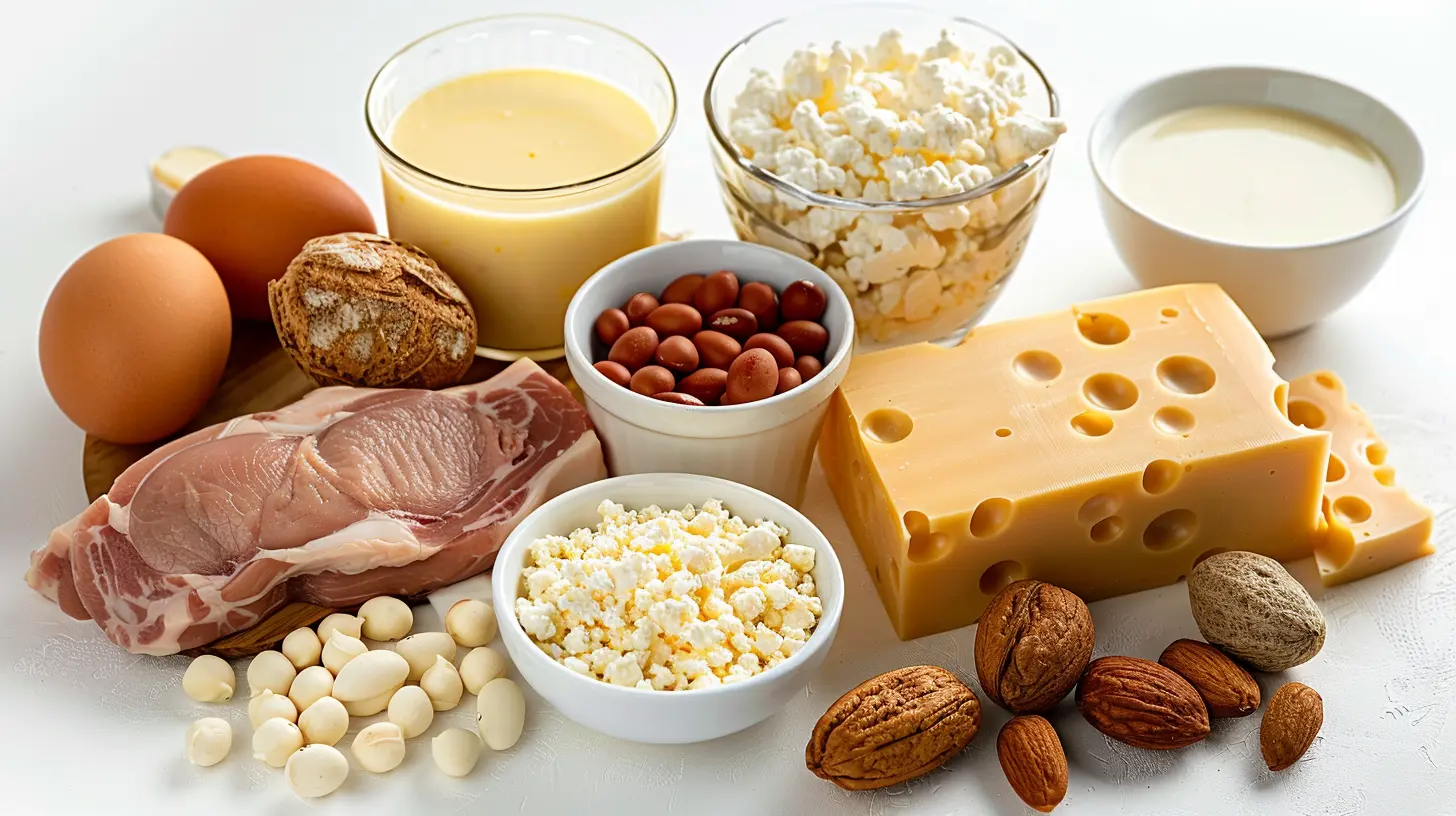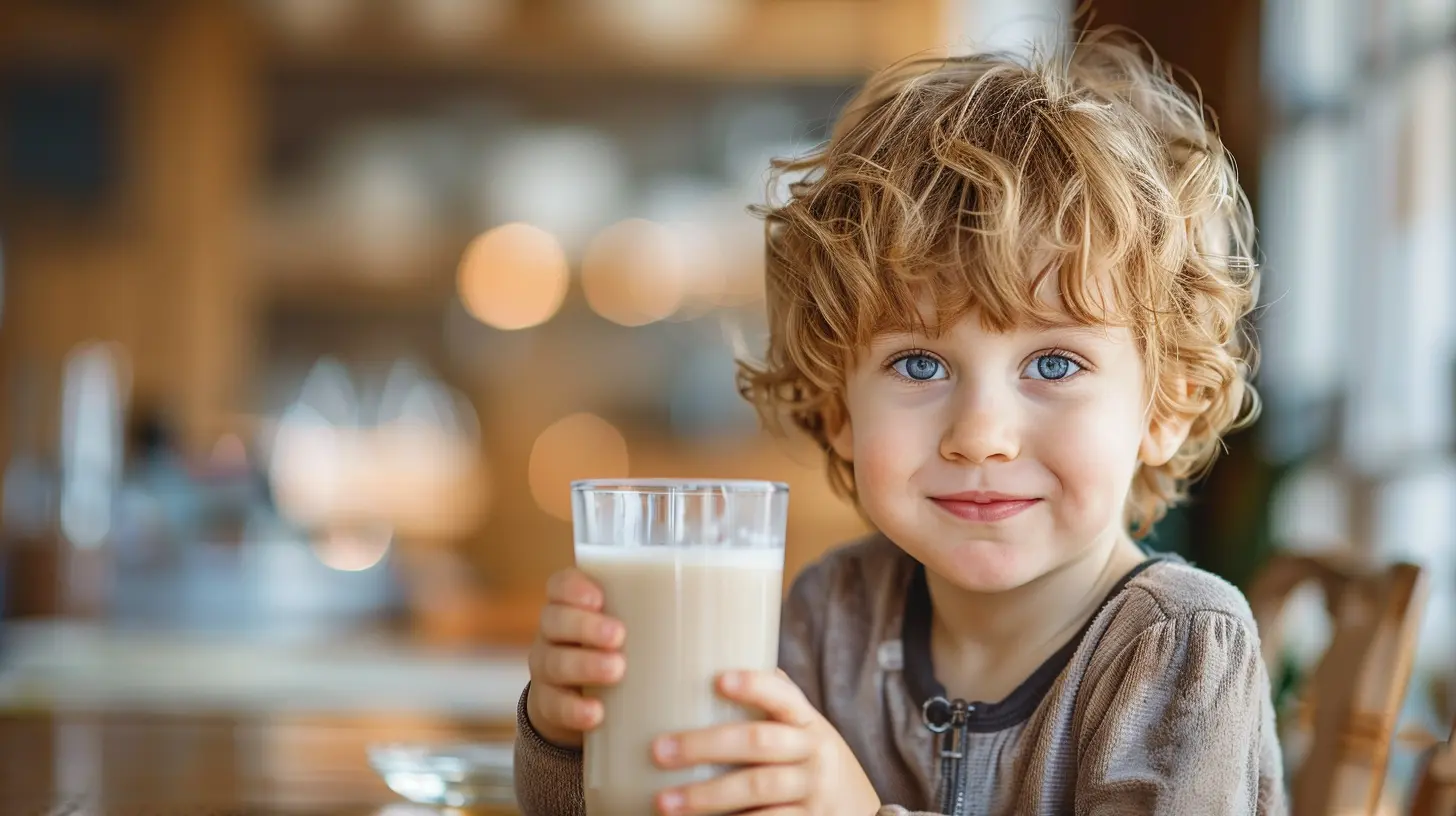The Role of Protein in Supporting Your Child’s Growth
9 August 2025
As parents, we want nothing more than to see our kids grow up healthy, strong, and full of energy. And while we often focus on things like sleep schedules, vaccines, and even screen time limits, one major building block of a child’s development sometimes gets overlooked — protein!
You’ve likely heard how important protein is for adults who are looking to build muscle or stay full longer, but have you ever stopped to think about how essential it is for your growing child? From building and repairing tissues to boosting their immune system and supporting brain development, protein plays a starring role in your child’s growth journey.
In this article, we’ll dive deep into the world of protein — what it is, why your child needs it, how much is enough, and the best sources to add to their plate. So, grab a cup of coffee, settle in, and let’s talk all things protein and parenting.
What Exactly Is Protein?
Okay, don’t worry — this isn’t a science class. But it does help to know the basics.Protein is one of the three main macronutrients, right alongside carbs and fats. Think of it as the body’s construction crew. Every time your child grows a little taller, gets stronger, or even heals from a scraped knee — that’s protein at work.
Proteins are made up of smaller units called amino acids (yep, kind of like LEGO blocks), and there are 20 different kinds. Out of these, nine are considered “essential,” which means your child needs to get them from food because their body can’t make them on its own.
Why Is Protein Important for Kids?
Let’s be real — kids are growing like little weeds. That means their bodies are in constant need of materials to build bones, muscles, organs, skin… basically everything.Here are a few key reasons protein is so important:
1. Muscle Development and Growth
Protein is literally the stuff muscles are made of. Whether it’s helping your toddler take their first steps or your tween hit their stride on the soccer field, protein fuels muscle development and repair.2. Brain Power and Focus
Protein isn’t just about biceps — it also helps produce neurotransmitters, the chemicals in the brain that send messages. This means protein can have a huge impact on your child’s concentration, mood, and learning abilities.3. Strong Immune System
Ever wonder how your kid bounces back so quickly from the sniffles? Thank their immune system — and yeah, protein plays a vital role in keeping it strong. Antibodies (those disease fighters) are made of protein!4. Repairing Tissues and Cells
Kids get bruises, paper cuts, and bumps like it’s their job. Protein helps heal and rebuild damaged tissues and cells, kind of like a superhero swooping in with the tools to fix things up.5. Steady Energy
Unlike sugar, which gives a quick high and a fast crash, protein provides slow-burning fuel. Balanced meals with protein help steady blood sugar levels — preventing energy dips and those dreaded meltdowns.
How Much Protein Does Your Child Need?
This is the million-dollar question, right? The answer actually varies based on age, weight, and activity level. But don’t worry, you don’t need a calculator every time your kid eats.Here’s a general guideline from the USDA:
| Age Group | Recommended Daily Protein |
|----------------------|---------------------------|
| Toddlers (1–3 years) | 13 grams |
| Young Kids (4–8) | 19 grams |
| Preteens (9–13) | 34 grams |
| Teen Boys (14–18) | 52 grams |
| Teen Girls (14–18) | 46 grams |
To put it into perspective, a single egg has about 6 grams of protein, and a small chicken breast clocks in around 25 grams.
But keep in mind — it’s not just about hitting a number. It’s about quality and variety too.
Best Protein Sources for Kids (That They'll Actually Eat)
Let’s face it: getting kids to eat anything remotely healthy can sometimes feel like negotiating with a tiny, very picky food critic. The good news? Protein comes in many kid-friendly forms.1. Animal-Based Proteins
These are complete proteins, meaning they contain all nine essential amino acids.- Chicken: Grilled, baked, or even in nugget form — it’s a win.
- Eggs: Scrambled, boiled, or in an omelet, eggs are protein-packed and versatile.
- Fish: Try tuna sandwiches or mild fish like cod with some ketchup.
- Dairy: Milk, yogurt, and cheese are easy ways to sneak in protein and calcium.
2. Plant-Based Proteins
Great option for vegetarians or to just mix things up.- Beans and Lentils: Add to soups, wraps, or mash them into spreads.
- Peanut Butter: Slather it on toast or pair it with apple slices for a snack.
- Tofu and Tempeh: Mild in flavor, they absorb whatever seasoning you throw at them.
- Quinoa: A grain that’s also a complete protein — magic!
3. Protein-Enriched Snacks
Sometimes, you just need a shortcut.- Protein bars (kid-approved ones, of course)
- Greek yogurt with fruit
- Milk alternatives like soy or pea milk (check the labels)
Pro tip: Mix and match proteins throughout the day instead of stressing over each meal. Breakfast might be Greek yogurt, lunch is a tuna sandwich, and dinner has some lentils on the side — boom, protein-packed day!
Signs Your Child Might Not Be Getting Enough Protein
Most kids in developed countries get enough protein without even trying. But in some cases — especially if your child is a picky eater, on a restricted diet, or has certain health conditions — protein intake can fall short.Here are a few subtle signs to watch for:
- Constant fatigue or low energy
- Slow growth or development delays
- Frequent illness or infections
- Thinning hair or brittle nails
- Loss of muscle mass or weakness
Noticing one or two of these doesn’t guarantee a protein deficiency, but it’s worth talking to your pediatrician if you’re concerned.
Protein Myths: Busted
Let’s clear up a few common misconceptions.“Too much protein will bulk my kid up like a bodybuilder.”
Nope — unless your child is chugging protein shakes all day and lifting weights like an Olympian, this won’t happen. Moderate protein intake supports healthy growth, not Hulk-style physiques!“Plant-based proteins aren’t complete.”
Some aren’t, but when combined (like rice and beans), they provide all essential amino acids. Plus, more variety means more nutrients.“My kid will get enough protein from fruits.”
Sorry, but fruits are awesome for vitamins and fiber — not protein. You’ll still need to include protein-rich foods in their meals.Easy Ways to Add More Protein to Your Kid’s Day
Still struggling to hit that protein target? Here are some simple, stress-free ideas:- Add a spoonful of peanut butter to oatmeal or toast.
- Stir chia seeds or protein powder into smoothies.
- Swap white bread for whole grain (it’s got more protein and fiber).
- Choose cheese sticks or boiled eggs as on-the-go snacks.
- Opt for hummus and veggie sticks over processed chips.
And remember, you don’t need to be perfect — just consistent!
Encouraging Healthy Eating Habits Around Protein
Let’s be honest — no one wants to fight at the dinner table. If your child is skeptical about protein foods (especially anything green or “weird-looking”), try these tips:- Lead by example: Kids mirror what they see. When they see you enjoying a grilled chicken salad or a hearty lentil soup, they’ll probably be more open to trying it too.
- Make it fun: Try bento-style lunches, fun food shapes, or interactive meals like taco night or DIY wraps.
- Let them help: When kids help cook, they’re more likely to eat what they make. Let them toss beans into a salad or stir eggs for breakfast.
Final Thoughts
Protein isn’t just a health trend; it’s a crucial piece of the puzzle when it comes to your child’s growth and overall development. From bones to brains, muscles to immune defense — protein works quietly behind the scenes to power it all.As parents, our job isn’t to obsess over every gram, but to offer balanced, varied meals that give our kids what they need to thrive. Keep it simple, make it fun, and know that every bite counts.
Because at the end of the day, helping your child grow strong and healthy? That’s the kind of parenting win we’re all cheering for.
all images in this post were generated using AI tools
Category:
Healthy EatingAuthor:

Tara Henson
Discussion
rate this article
1 comments
Zadie Roth
Great insights on protein's importance for growth! A balanced diet is essential, and this article highlights key points effectively.
August 27, 2025 at 2:37 PM

Tara Henson
Thank you for your feedback! I'm glad you found the insights valuable. A balanced diet truly is crucial for growth!


